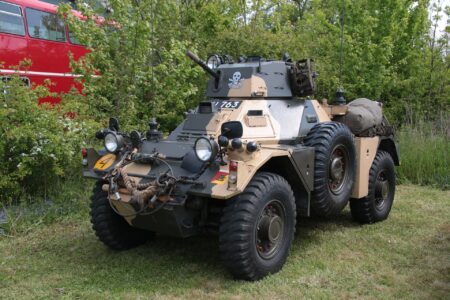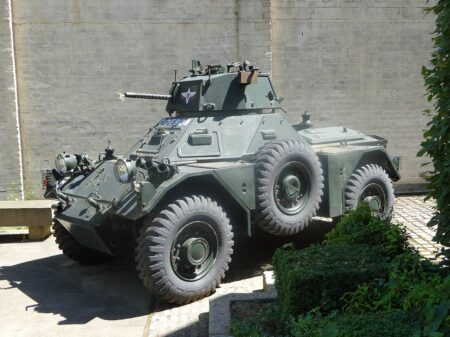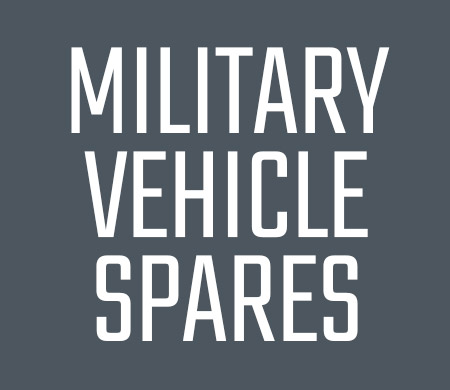Daimler Ferret Original Parts
Engine, mechanical, electrical and ancillary components for Daimler Ferret. Including large stocks of Rolls Royce 'B' Range engines and parts. We are able to supply parts in quantity or single items worldwide.
Make an enquiryThe Daimler Ferret: A Stalwart of British Armour

Photo Credit: kitmasterbloke
Daimler Ferret armoured car
The Daimler Ferret was a British light armoured car that served with the British Army and armed forces of other countries from the mid-1950s to the early 1990s. It was a versatile and reliable vehicle that saw service in a variety of roles, including reconnaissance, infantry support, and peacekeeping.
Design and Development
The Ferret was developed by Daimler in the early 1950s as a replacement for the ageing Daimler Dingo light armoured car. It was a small and agile vehicle with a high level of protection for its size.
The Ferret had a crew of four, including a driver, commander, gunner, and loader. It was powered by a Rolls-Royce B80Mk6A four-cylinder petrol engine that developed 102 horsepower, giving the vehicle a maximum speed of around 80 kilometers per hour (50 miles per hour).
The Ferret’s main armament was a 7.62mm L7 machine gun, which could be fired from the turret or from a pintle mount on the hull. It also had a coaxial 7.62mm machine gun for engaging infantry and light targets.
Service History
The Ferret entered service with the British Army in 1952 and quickly became a popular vehicle among troops. It was used in a variety of roles, including reconnaissance, infantry support, and peacekeeping.
The Ferret’s small size and maneuverability made it well-suited for operating in difficult terrain, such as forests, jungles, and urban environments. It was also relatively easy to maintain, which further enhanced its appeal among military users.

Photo Credit: Acad Ronin
Deployments and Exports
The Ferret saw extensive use during the Cold War, participating in numerous conflicts and peacekeeping operations around the world. It was used in the Malayan Emergency, the Aden Emergency, the Suez Crisis, the Borneo Confrontation, the Dhofar Rebellion, and the Falklands War.
In addition to its service with the British Army, the Ferret was also exported to a number of other countries, including Australia, Canada, Chile, Egypt, India, Iraq, Jordan, Malaysia, Nigeria, Oman, Pakistan, Qatar, Saudi Arabia, Singapore, South Africa, Sudan, Sweden, and Thailand.
Variants
Over its production run, the Ferret was produced in a number of variants, including:
• Mk I: The basic model of the Ferret, with a 7.62mm machine gun as the main armament.
• Mk II: An improved version of the Ferret with a new turret and a more powerful engine.
• Mk III: A further improved version of the Ferret with a new hull and a new suspension system.
• Mk 4 (Ferret A4): An improved version of the Ferret with a new turret and a new armament package, including a 76mm gun and a coaxial 7.62mm machine gun.
• Mk 5 (Ferret A5): The final variant of the Ferret, with a new engine and a new suspension system.
• Mk I: The basic model of the Ferret, with a 7.62mm machine gun as the main armament.
• Mk II: An improved version of the Ferret with a new turret and a more powerful engine.
• Mk III: A further improved version of the Ferret with a new hull and a new suspension system.
• Mk 4 (Ferret A4): An improved version of the Ferret with a new turret and a new armament package, including a 76mm gun and a coaxial 7.62mm machine gun.
• Mk 5 (Ferret A5): The final variant of the Ferret, with a new engine and a new suspension system.
Retirement and Legacy
The Ferret was gradually phased out of service with the British Army in the early 1990s, being replaced by more modern armoured vehicles such as the Scimitar and the Warrior. However, it continued to serve in other militaries for many years, and some examples are still in use today.
The Ferret left a lasting legacy as a versatile and reliable armoured car. It was a popular choice among military personnel around the world, and its simple and straightforward design made it easy to maintain and operate.
The Ferret’s legacy continues to be celebrated by enthusiasts and collectors of military vehicles, who appreciate its unique combination of ruggedness, simplicity, and practicality.
In conclusion, the Daimler Ferret was a significant armored vehicle of the Cold War era. Its combination of firepower, protection, and mobility made it a valuable asset to the armed forces of many countries.
